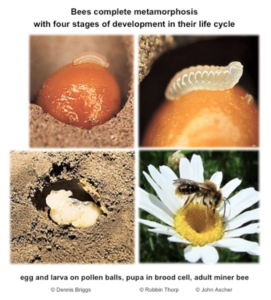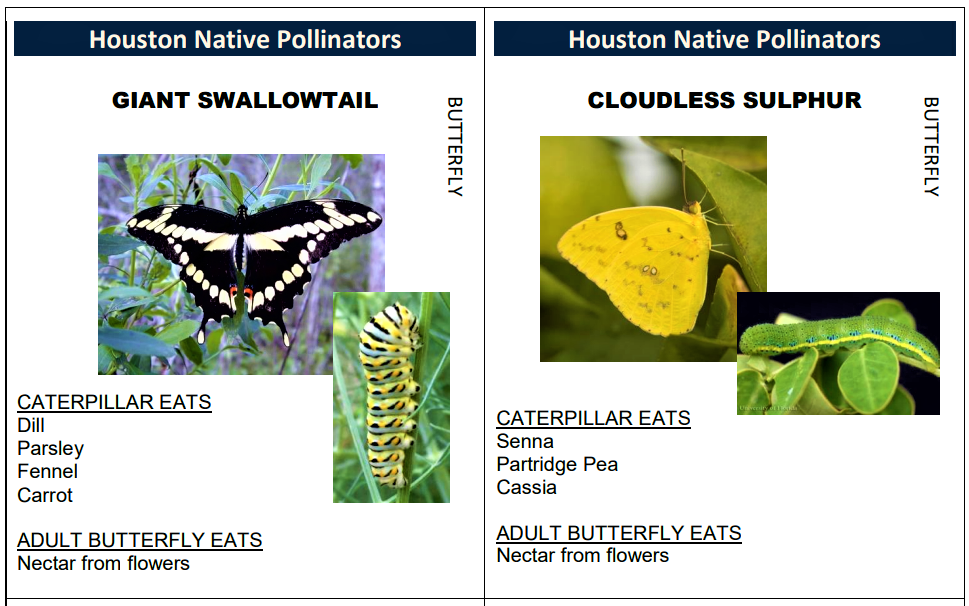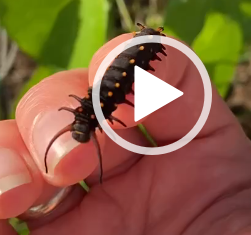Learning Activites and Games
Pollinator Game
Use my Pollinator Game to teach groups about our native pollinators, they have been great for all ages! I have used it with middle school students, adult science teachers, scout troops and more.
Click on the image and download the cards, and use the Facilitator Guide for activity ideas. Images on the cards are mine and Lauren Simpson’s, curator of St. Julian’s Crossing Wildlife Habitat (used with permission).
Native Bee Obstacle Course
Pre-K – 2nd Grade
When groups of younger children ask me to teach about native bees, I like to use Learning Stations that keep kids moving! One that has been very successful for me is the “Native Bee Obstacle Course” where I create learning stations (number of stations dependent on size of group). I like to finish my lessons with a song and dance about bees. The kids love it!

75% of native bees nest in the ground! Tunnels can help students pretend to be ground-nesting bees like Longhorn Bees.
Bee Metamorphosis Game
K – 5th Grade (I’ve also done this with middle school groups!)
Bees have complete metamorphosis with four stages of life: egg, larva, pupa, and adult. In this game, students act out each transformation, which teaches them about life cycles of bees, but can be modified to teach butterfly stages: egg, caterpillar, chrysalis (cocoon), and butterfly.

Displays about Pollinators
A garden club reached out to ask about ideas for pollinator displays, for their special garden tours and events. Displays are easy to make, encourage fun and informative conversations, show the diversity of pollinator-related interests, and are educational for garden spectators.
Idea 1: Member Displays
Garden club members may create educational poster board displays about their specific interests, such as native bees, or honey bees, or butterflies, dragonflies, fireflies, bats, birds; or about yard signage in support of wildlife habitats.
Idea 2: Students Displays
Students in organizations such as 4H, FFA, or Scouts might be interested in creating a display as a science or community environmental service project.
Idea 3: Pollinator House Displays
Different pollinator houses may be displayed with information placards identifying which pollinator the house is designed for, such as leafcutter (my favorite), carpenter, miner, butterfly, bat, etc. Note: without proper maintenance, native bee houses can harm bees. A display of improperly designed bee houses would also be educational (such as the wrong hole diameter or depth); examples of these bad designs can be found in many garden centers (see “Create a Bee Hotel” on our Garden Designs page).
Idea 4: Pollinator Pathway Displays
If a pollinator pathway is being showcased, display boards with information about the likely pollinators along the pathway is fun and educational. There are companies who specialize in interpretive trail signs for inspiration.
Idea 5: Pollinator Model Displays
Pollinator models can be as easy as paper, crayons and glue, or more elaborate with clay or 3-D printing. Museums and wildlife centers often have professional models of pollinators, including life-cycles and nesting habits. Look for books (such as “How to Build an Insect” by Roberta Gibson), or companies who specialize in model building, for inspiration.
More Pollinator Teaching Resources
- Encyclopedia of Life Learning + Education (EOL L+E) Biodiversity Cards and Lesson Plans.
EOL L+E works with educators, citizen scientists and partners to make information accessible through free tools, services and resources. https://eddev.eol.org/
- Scavenger Hunt Lauren Simpson of St. Julian’s Crossing – Wildlife Habitat uses this colorful page when she has a group of students visiting her home wildlife gardens.
- Symbiotic Schoolyard: Biodiversity Education for Middle Schoolers
Doug Tallamy at Homegrown National Park provides comprehensive curriculum on restoring biodiversity in schoolyards, called The Schoolyard Habitat Restoration Unit. While there is a cost, you can email Doug for questions or information. https://www.symbioticschoolyard.org/
Learning Videos
Pipevine Swallowtail Butterfly
Pipevine Swallowtail and Aristolochia (Pipevine).
I am STILL learning a lot about this butterfly and their food source, the pipevine (Aristolochia). Although the caterpillars are safe to touch, do not eat them as they only feed on the poisonous pipevine plant.
The native Texas species of Aristolochia are: A.coryi, A.erecta, A.pentandra, A.reticulata, A.serpentaria, A.tomentosa, and A.wrightii.
A.californica and A.macrophylla are not native to Texas, but may be easier to find. There’s also a desert variety – A.watsonii.
A.gigantea is a Brazilian native that does not contain the correct chemicals for our North American butterflies and can actually poison them.
I spent some time trying to find the native varieties and it is really hard. I ended up ordering seeds for A. tomentosa and I’m going to have to painstakingly grow them myself. I say painstakingly because natives seem to take longer to grow and are much more finicky.
These websites have good information:



